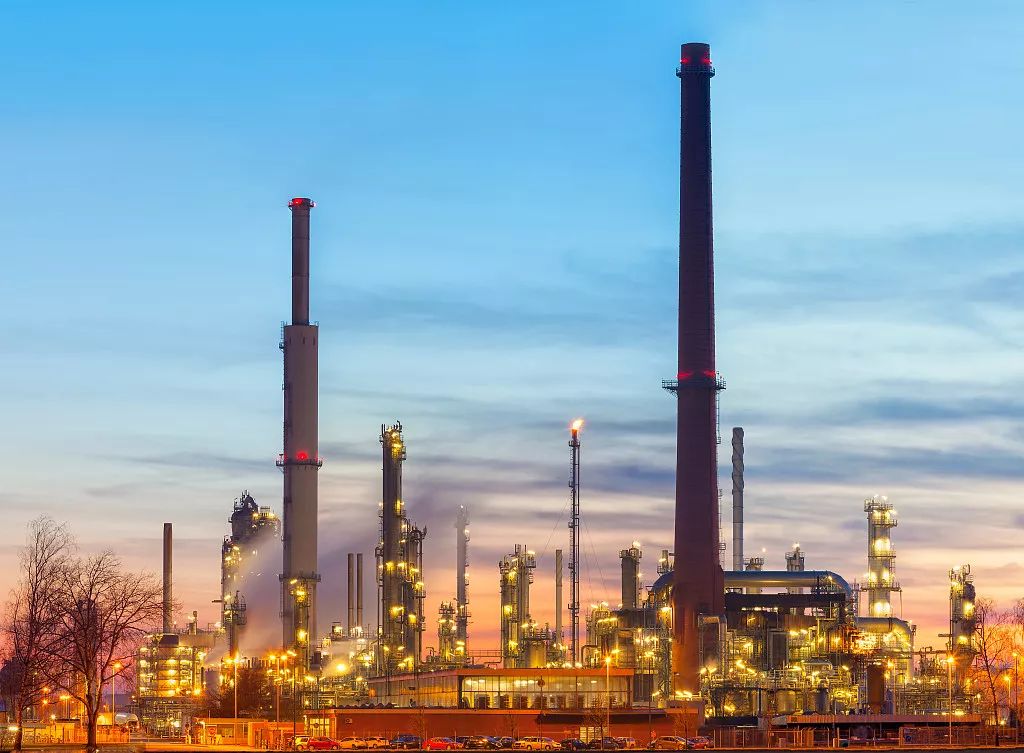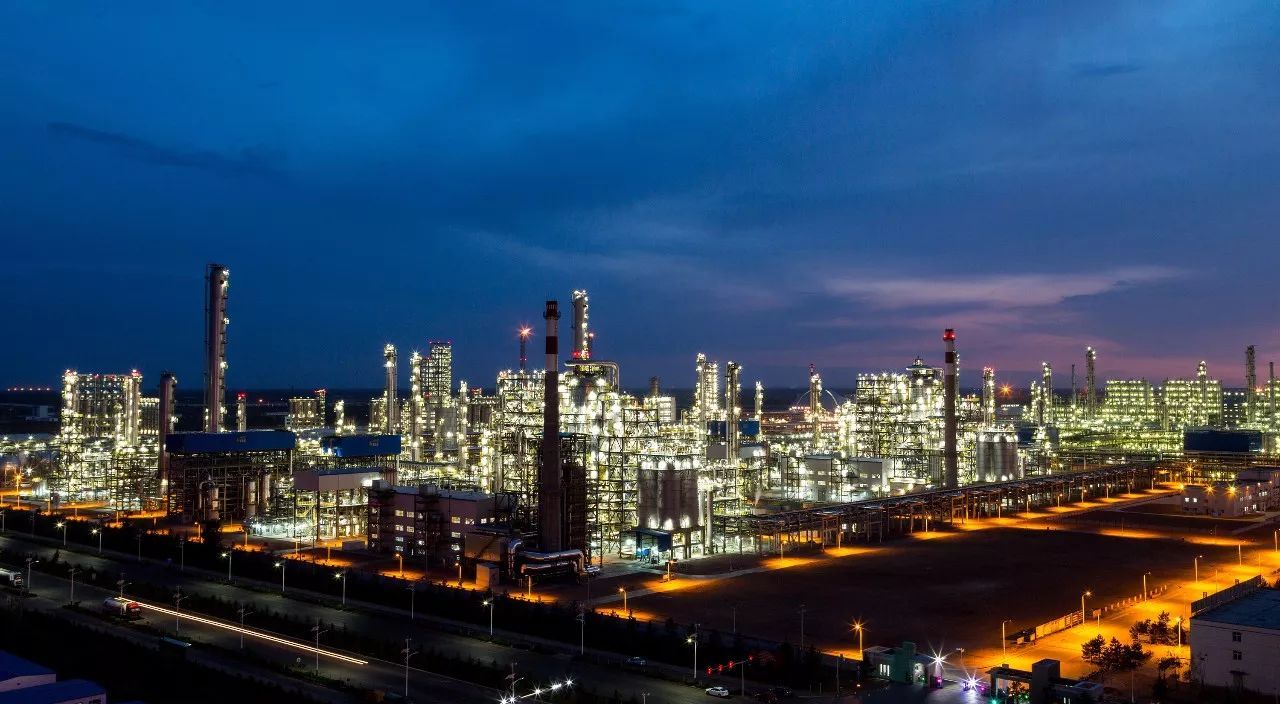1.Saudi Aramco invests heavily in petrochemical projects in China
Saudi Aramco, the world’s largest oil producer, has increased its investment in China: it has invested in Rongsheng Petrochemical, a leading private refining and chemical company in China, at a substantial premium, and invested in the construction of a large-scale refinery project in Panjin, which fully reflects Saudi Aramco’s confidence in the development of China’s petrochemical industry.
On March 27, Saudi Aramco announced that it had signed an agreement to acquire a 10% stake in Rongsheng Petrochemical for US$3.6 billion (about 24.6 billion yuan). It is worth noting that Saudi Aramco has invested in Rongsheng Petrochemical at a premium of nearly 90%.
It is understood that Rongsheng Petrochemical and Saudi Aramco will cooperate in crude oil procurement, raw material supply, chemical sales, refined chemical product sales, crude oil storage and technology sharing.
According to the agreement, Saudi Aramco will supply 480,000 barrels per day of crude oil to Zhejiang Petrochemical Co., Ltd. (“Zhejiang Petrochemical”), a subsidiary of Rongsheng Petrochemical, for a period of 20 years.
Saudi Aramco and Rongsheng Petrochemical are upstream and downstream of each other in the industrial chain. As one of the world’s largest integrated energy and chemical companies, Saudi Aramco is mainly engaged in oil exploration, development, production, refining, transportation and sales. Data show that in 2022, Saudi crude oil production will be 10.5239 million barrels per day, accounting for 14.12% of global crude oil production, and Saudi Aramco crude oil production will account for more than 99% of Saudi crude oil production. Rongsheng Petrochemical is mainly engaged in the research and development, production and sales of various oil products, chemicals and polyester products. At present, the company operates the world’s largest monomer refinery Zhejiang Petrochemical’s 40 million tons/year refining and chemical integration project, and has the world’s largest production capacity of purified terephthalic acid (PTA), paraxylene (PX) and other chemicals. The main raw material of Rongsheng Petrochemical is the crude oil produced by Saudi Aramco.
Mohammad Qahtani, executive vice president of Saudi Aramco’s downstream business, said that this transaction demonstrates the company’s long-term investment in China and confidence in the fundamentals of China’s petrochemical industry, and also promises to provide Zhejiang Petrochemical, one of China’s most important refiners Reliable supply of crude oil.
Just the day before, on March 26, Saudi Aramco also announced the establishment of a joint venture company in Panjin City, Liaoning Province, my country, and the construction of a large-scale refining and chemical complex.
It is understood that Saudi Aramco, together with North Industries Group and Panjin Xincheng Industrial Group, will build a large-scale refining and chemical integration unit in Northeast China and establish a joint venture company named Huajin Aramco Petrochemical Co., Ltd. The three parties will hold 30% of the shares. %, 51% and 19%. The joint venture will build a refinery with a processing capacity of 300,000 barrels per day, a chemical plant with a capacity of 1.65 million tons per year of ethylene and 2 million tons per year of PX. The project will start construction in the second quarter of this year and is expected to be fully operational in 2026.
Mohammad Qahtani said: “This important project will support China’s growing demand for fuels and chemicals. This is both an important milestone in our continued downstream expansion strategy in China and beyond, and is part of the growing demand for petrochemicals globally. important driving force.”
On March 26, Saudi Aramco also signed a memorandum of cooperation with the People’s Government of Guangdong Province. The memorandum proposes a framework for cooperation to explore investment opportunities in various sectors, including energy.
Amin Nasser, President and CEO of Saudi Aramco, said that Saudi Aramco and Guangdong have broad cooperation space in the petrochemical field, new materials and strategic emerging industries, and are willing to strengthen cooperation in petrochemical, hydrogen energy, ammonia energy and other fields to support the development of Guangdong A modern and more sustainable petrochemical industry to achieve mutual benefit and win-win between Saudi Aramco, China and Guangdong.
2.Dusty outlook for US olefins market
After a turbulent start to 2023, oversupply continues to dominate the U.S. ethylene, propylene and butadiene markets. Looking ahead, U.S. olefins market participants said growing uncertainty in the market had clouded the outlook.
The U.S. olefins value chain is in a state of unease as the economy slows, rising interest rates and inflationary pressures dampen demand for durable plastics. This continues the trend in Q4 2022. This general uncertainty is reflected in U.S. spot prices for ethylene, propylene and butadiene in early 2023, which are down in all markets compared to the same period in 2022, reflecting weak demand fundamentals. According to S&P Global Commodity Watch data, in mid-February, the US spot price of ethylene was 29.25 cents/lb (FOB US Gulf of Mexico), up 3% from January, but down 42% from February 2022.
According to market participants in the United States, production conditions and unplanned plant shutdowns have disrupted market fundamentals, triggering an unstable balance between reduced supply and sluggish demand in some industries. This dynamic was particularly evident in the US propylene market, where two of the three propane dehydrogenation (PDH) plants in the US were shut down unscheduledly in February. U.S. spot prices for polymer-grade propylene rose 23% over the month to 50.25 cents/lb ex-quad, Gulf of Mexico, buoyed by tighter supplies. Uncertainty is not unique to the U.S., with imbalances in supply and demand fundamentals also casting a shadow over European and Asian olefins markets in early 2023. U.S. market participants expect major changes in global fundamentals to change the current pessimism.
Even so, U.S. companies have more reason to be optimistic than their overseas peers when it comes to upstream pressures, as ethane and propane, the main feedstocks for U.S. olefins production, have consistently shown greater cost competitiveness than naphtha. Naphtha is the main olefin feedstock in Asia and Europe. Asian companies have highlighted the importance of the U.S. feedstock advantage in global olefins trade flows, giving U.S. sellers greater flexibility in exporting.
In addition to macroeconomic and inflationary pressures, weak demand from buyers in the downstream polymer market has also clouded US olefin market sentiment, exacerbating the oversupply of olefins. As global polymer capacity continues to grow, oversupply will be a long-term problem for U.S. companies.
In addition, extreme weather conditions have also put pressure on U.S. producers, with a brief cold snap in late December and tornado activity in the Houston Shipping Channel in January affecting olefins facilities and downstream production along the U.S. Gulf Coast. In a region that has been battered by hurricanes for years, such an event can heighten market uncertainty and disrupt market liquidity and infrastructure. While such events may have limited immediate impact on prices, energy prices can spike in the aftermath, squeezing margins and widening the gap between pricing expectations between buyers and sellers across the industry. Given the uncertain outlook for the remainder of 2023 and beyond, market participants provided an increasing conceptual assessment of forward-looking market dynamics. Global oversupply could exacerbate illiquidity as demand from buyers is expected to remain weak in the near term.
Currently, American Enterprise Products Partners is considering a new 2 million ton/year steam cracker in Texas, while Energy Transfer is considering building a 2.4 million ton/year plant that will use a fluidized catalytic The cracker and a pyrolytic steam cracker produce ethylene and propylene. Neither company has made a final investment decision on the projects. Energy Transfer executives said potential customers have held back in recent months due to economic concerns.
In addition, a 750,000-ton/year PDH plant under construction by Enterprise Products Partnership in Texas is scheduled to start production in the second quarter of 2023, increasing the PDH capacity in the United States to 3 million tons/year. The company plans to expand its 1 million mt/year ethylene export capacity by 50% in the second half of 2023 and another 50% by 2025. This will push more U.S. ethylene into the global market.
JIN DUN CHEMICAL has built a special (meth) acrylic monomer manufacturing base in ZHEJIANG province. This makes sure the stable supply of HEMA, HPMA, HEA, HPA, GMA with high level quality. Our special acrylate monomers are widely used for thermosetting acrylic resins, crosslinkable emulsion polymers, acrylate anaerobic adhesive, two-component acrylate adhesive, solvent acrylate adhesive, emulsion acrylate adhesive, paper finishing agent and painting acrylic resins in adhesive.We have also developed the new and special (meth) acrylic monomers and derivatives. Such as the fluorinated acrylate monomers, It can be widely used in coating leveling agent, paints, inks, photosensitive resins, optical materials, fiber treatment, modifier for plastic or rubber field. We are aiming to be the top supplier in the field of special acrylate monomers, to share our rich experience with better quality products and professional service.
Post time: Mar-30-2023



